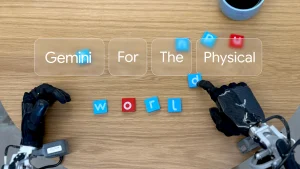Software developers now use AI to write and review code, detect bugs, test software, and even optimize development projects. AI-powered development allows individuals not necessarily trained in coding to fill talent gaps and learn new skills
Artificial intelligence (AI) is the result of coding, and now, AI writes its own computer programs. AI has come full circle as more companies and more coders are using it to aid the software development process.
Software 2.0.
In the traditional flow of software development, programmers painstakingly and carefully design software systems, “instruction by instruction”, in a process that can be slow, tedious, and error-prone.
In Software 2.0, the development is driven by examples and not by instructions.
Many examples of what we want the program to do is collected and labelled using a simple scheme. These examples are then fed to a machine learning algorithm that trains our algorithm. At the end of this process, a “trained model” appears that can be used as a program.
Instead of programming “instruction by instruction,” the industry is moving to a paradigm of programming “example by example.” These new AI-powered tools work in a similar way to spelling and grammar-checkers, enabling coders to reduce the number of keystrokes they need to type by around 50%.
They can also spot bugs while code is being written, while they can also automate as many as half of the tests needed to confirm the quality of software.
Neural networks and deep learning
This new way of programming is made possible by neural networks. Neurons in deep learning models are nodes through which data and computations flow. Deep learning uses multiple layers of neural networks to extract and transform data. Each neural network layer takes its input from the previous layers and progressively refines them. The layers are trained by algorithms to minimize errors and improve accuracy. This is something that even a very smart programmer would struggle to do.
Using this kind of deep learning, one can automatically create programs. But these programs look very different from the traditional programs we are used to seeing in C, Java, or Python. These deep learning programs are simply a collection of numbers, some of them around millions.
Over 70% of work that is done manually by software engineers could be automated with development automation tools that are based on AI when combined with existing development technologies.
GPT-3, the largest ML model released in June 2020, is an autoregressive language model that uses deep learning to produce human-like text. It presents a significant opportunity for automating development and is already seeing adoption.
Software 2.0 is a paradigm shift
It is a paradigm shift. The idea is new, the tools are different, and the process of developing software in this mode is also very different.
Iterations guide the process, and, in many ways, the process is designed around them. We discover business requirements in these iterations. We collect better data in these iterations and better neural network models are designed in these iterations to minimize errors and improve accuracy.
Benefits of AI driven programming
The benefits of AI-assisted coding are numerous. However, the principle benefit for companies is efficiency. Now, software developers can use AI to write and review code, detect bugs, test software, and even optimize development projects.
AI-powered development brings the additional benefit of ‘democratization’ as these tools allows individuals not necessarily trained in coding to fill talent gaps and learn new skills. There is also AI-driven code review, providing quality assurance before you even run the code.
Of course, as great as the use of AI in development may be for companies, it brings the inevitable fear that automation will end up taking jobs from coders. But this is unlikely.
For the most part, these AI tools are helping and augmenting humans, not replacing them. AI supports humans throughout the software development lifecycle. It just accelerates the work. In some cases, it eliminates certain tasks, but people are still needed to create and oversee the applications.
In case you missed:
- None Found









